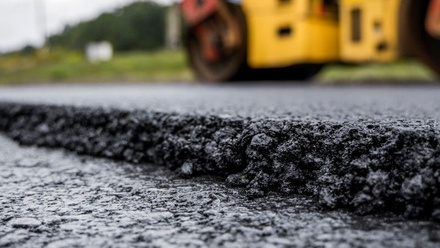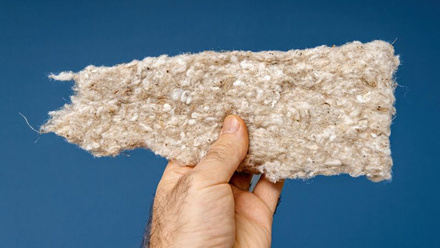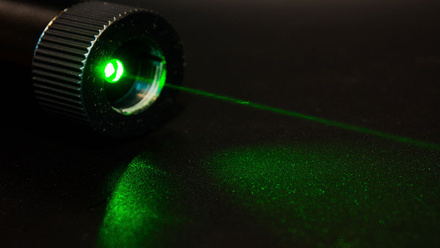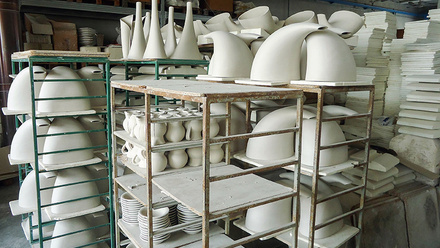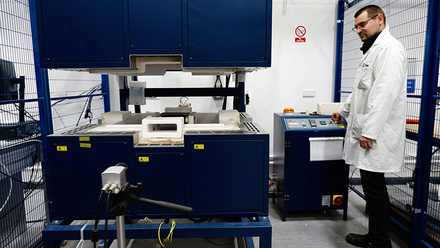Steel heroes
There have been many people who have pushed forward the boundaries of knowledge when it came to iron and steelmaking, here are some of them, many were Bessemer Medal winners, and were prominent in the Iron and Steel Institute.

Sir Henry Bessemer
- 1813 - 1898
- Knighthood, 1879
- Fellow of the Royal Society 1879
- President ISI 1871-3
- Instituted Bessemer Gold Medal 1873
- Telford Medal 1859 (ICE)
- Albert Gold Medal 1872 (Soc of Arts)
- Hon member of ICE 1877
- Howard Quinquennial Prize 1877 (ICE)
- Freedom of the City of London 1880
- Knight Commanderof the Order of Franz-Joseph (Austria)
- Grand Cross of the Legion of Honour (France)
Bessemer’s main contribution to the steelmaking industry was his invention of Bessemer process for steel-making. Over a period of 10 years his experiments resulted in the discovery that blowing a blast of air through molten pig iron converted it into steel. His invention increased the production of steel 200 fold and reduced the price by a factor of 12. Royalties from his steelmaking patents made over £1 million, a lot of money in those days.
His other innovations include a movable stamp, sugarcane crushing machine, machine to manufacture bronze powder, graphite to be used in pencils, design of steamboats and large telescopes. Specifications of his 120 inventions fill 9 large volumes.
Robert Forester Mushet
- 1811 - 1891
- Bessemer Gold Medal, 1876
In 1848 he made experiments on a sample of ‘spiegeleisen’, an alloy of iron, carbon, and manganese, manufactured in Rhenish Prussia. The results were of no immediate practical value, but they ultimately became of great importance in connection with the invention of the pneumatic steelmaking process by Sir Henry Bessemer (1813–1898), to improve malleability of the steel.
In 1857 Mushet was the first to make durable rails of steel rather than cast iron. Between 1859 and 1861 Mushet took out about twenty patents for the manufacture of alloys of iron and steel with titanium, tungsten, and chromium.
In 1868 he found that the addition of finely powdered wolfram ore (tungsten) produced a steel which did not require anything but cooling in the open air to give it a cutting edge hard enough for lathe and other similar tools. This self-hardening steel—the first specialized tool steel for engineers' tools—contained about 7% tungsten and made possible a 50% faster cutting speed.
After an abortive attempt to manufacture this steel through his Titanic Steel and Iron Company of Coleford, Mushet (who decided not to patent tungsten tool steel but kept the formula secret) licensed the product to Samuel Osborn & Co. of Sheffield. Osborns acquired the sole right to manufacture R. Mushet's Special Steel (RMS).
He is usually regarded as the first important pioneer of alloy steels.
Sir Isaac Lowthian Bell
- 1816 - 1904
- 1st Baronet 1885
- FRS 1875
- First Bessemer Medallist 1874
- Cross of the Legion of Honour (from France)
- George Stephenson Medal1900 (ICE)
- President ISI 1873-5
- President I Mech E 1884
- President of the Iron Trades Ass’n 1886
- President of Inst of Mining Engineers 1904
- First President of the Newcastle Chemical Society
- Member of the Royal Society
- Member if the Inst of Civil Engineers
- Partner of Bell Bros, Port Clarence
- Director of the North Eastern Railway and Chairman of their Locomotive Committee
- Lord Mayor of Newcastle-upon-Tyne
- 1854-5 and 1862-3
- Justice of the Peace
- Deputy Lieutenant, County of Durham
- High Sherriff County of Durham 1884
- MP North Durham 1874 and
- MP for Hartlepool 1875-1880
- Albert Medal of the Royal Soc. of Arts 1895
Sir Isaac was in partnership with his younger brother John in the company of Bell Bros, who were largely responsible for developing the ironstone field of Cleveland.
Bell Brothers operated twelve blast furnaces at Port Clarence by 1877. The company also operated ironstone mines, limestone quarries and collieries. Around £1 million in capital was invested in the business.
Sir Lowthian Bell produced many papers and several books on the production of iron, and reviews of practices worldwide. In 1872 he published ‘Chemical Phenomena of Iron Smelting’, in 1884 ‘The Principles of the Manufacture of Steel’ and in 1886 ‘The Iron Trade of the United Kingdom compared with other Chief Ironmaking Nations’
Bell Brothers started the first works in England for the manufacture of aluminium, and were also pioneers in salt manufacture from mined rock salt.
William Menelaus
- 1818 – 1882
- Founder and first President of the South Wales Institute of Engineers 1857
- Member of the Cleveland Institution of Engineers 1872
- President ISI 1875-7
- Bessemer Medal 1881
- Member if the Institution of Civil Engineers
- Member of the Institution of Mechanical Engineers
Born in East Lothian, and initially apprenticed to an engineering company in Haddington. In 1839 he was at Middlesbrough, working on erecting and maintaining brickmaking machinery for Messrs Pease & Co.
In 1844 he went to South Wales to remodel a corn mill, and was persuaded to stay and manage Fothergill’s ironworks at Llwydcoed and Abernant. In 1850 he was asked to join Dowlais Iron company as engineer-manager of the mills and forges.
The first commercial attempt to produce steel using the Bessemer process was made at Dowlais. After development of the process by Mushet, it was taken up on an large scale at Dowlais, and they were quick adopters of the Siemens furnace.
In 1873 formed the Orcenario Iron Ore Company jointly owned by Dowlais, Consett and Krupps. He invented several mechanical handling devices and designed the massive new two-directional Goat Mill for iron rolling.
Menelaus founded the original South Wales Institute of Engineers in 1857, which has a medal named after him.
Sidney Gilchrist Thomas
- 1850 – 1885
- Bessemer Medal 1883
- Gold Medal of the Society of Arts
Percy Carlyle Gilchrist
- 1851 – 1935
- Vice President of the ISI
- Fellow of the Royal Society 1891
- Chevalier of the Legion of Honour
Sidney Gilchrist Thomas, conceived the idea of using a basic lining in a Bessemer converter to reduce Phosphorous. He experimented with a small scale converter, but could not get the right conditions at small scale.
In 1875, he contacted Mr Percy Carlyle Gilchrist (his cousin) who was a chemist at the Blaenavon Works, and in 1875 experiments proved his idea worked. In March 1878 he announced his discovery at an ISI meeting, and took out a patent in May 1878.
Mr E Windsor Richards (President of the CIE in 1880) of Bolckow & Vaughan in Middlesbrough saw the process at Blaenavon, and erected two 30 cwt converters to refine the process. The cousins presented a joint paper to the ISI in May 1879, and what became known as the Thomas-Gilchrist Process was used widely and increased steel production.
In 1881 the Dephosphorizing and Basic Patents Co. Ltd was formed with Gilchrist, Thomas and others. On Thomas’s death in 1885, Gilchrist became managing director and continued working to develop the process, also acting as a consulting metallurgical engineer.
Gilchrist was elected Fellow of the Royal Society in 1891 and made a Chevalier of the Legion of Honour in France. In 1916, Gilchrist was made an honorary vice president of the ISI.
Dr John Edward Stead
- 1851 - 1923
- FRS, FCS, DSc, D Met, FIC,
- Bessemer Medallist 1901
- President CIE 1894-6
- President ISI 1920-1
- Justice of the Peace
- Borough Analyst
- Honorary Life Member of AIME
Perhaps the most significant chemist-metallurgist in British 19th Century iron and steelmaking, and a consultant of international standing. He was awarded Doctorates from three different Universities (Leeds, Sheffield, and Victoria University of Manchester).
Co-authored a book in 1904, ‘Microscopic Analysis of Metals’ by Floris Osmond and J E Stead. Published 84 scientific papers, of which 39 were in the Journal of the Iron and Steel Institute.
Stead was best known for his work into the characteristics of phosphoric ironstone.Cleveland ironstone contains 0.5% P. The micro-constituent Fe3P was named Steadite in recognition of his work on the iron phosphorous system.
He is also credited with suggesting that during the basic Bessemer steelmaking process, prolonging the air blast through the metal after the oxidation of all the carbon would result in removing the phosphorous.
Stead was instrumental in the founding of the Constantine College (now Teesside University), and the Cleveland Technical Institute (now the Cleveland Scientific Institution).
In January 1916, Stead wrote a letter to Lloyd George, then Minister of Munitions, regarding the sulphur and phosphorous levels in Munition shell cases.Britain was unnecessarily restricting these and using a difficult acid steelmaking process.
The National Archives at Kew, contain detailed correspondence between Stead and the MOD, who were unwilling to change the process. After 15 months, basic open hearth steelmaking was allowed, and S & P levels were raised to 0.08% (from 0.05%). This had the result of increasing supply of shell cases, and reducing the cost.
Sir Robert Hadfield
- 1859 – 1940
- Master Cutler of Hallamshire 1899
- Bessemer Gold Medal 1904
- President of the Iron and Steel Institute 1905-7
- Knighted 1908
- Fellow of the Royal Society 1909
- Elliot Cresson Gold Medal of the Franklin Institute 1910
- Honorary DMet, Sheffield University 1911
- Honorary DSc Leeds University 1912
- Made a Baronet 1917
- Freedom of the City of London 1917
- John Fritz Gold Medal of the Engineering Foundation 1921
- Thomas Turner Gold Medal Birmingham University 1923
- Officer of the Legion of Honour 1925
- Honorary DSc Oxford University 1927
- Freedom of the City of Sheffield 1939
Worked in his father’s steel castings company, and took over control in 1883. The business became a limited liability company with Hadfield as Chairman and MD in 1889. In 1913, the company assumed the name of Hadfields.
He researched the effects of increasing manganese additions to carbon steel, discovering that when the Mn content reached 12-13% it offered remarkable resistance to wear. It was used for machine parts, and steel helmets in the First World War.
He also developed Silicon steels with 1½% Si, and these were used in the top sides of the ships Mauretania and Lusitania, as a result of high tensile strength.
He researched many other aspects of steel metallurgy and presented 23 papers to the ISI, and many others to a variety of other audiences, and published two books.
He was elected an Honorary Member of 27 scientific and technical institutions internationally.
Harry Brearly
- 1871 –1948
- Bessemer Gold Medal 1920
- Freedom of Sheffield 1939
Brealy's first job was as a laboratory boy at Thos Firth and Sons Ltd. in Sheffield. In 1901, he left Firths to go to Messrs Kayser Ellison & Co Ltd but returned to Firths in 1904 to become Chief Chemist at their Riga works, and the following year he was appointed as Works Manager.
In about 1901 he co-wrote ‘The Analysis of Steel Works Materials’ with Fred Ibbotson. He subsequently wrote three other books, two on tool steels and one on ingots and moulds.
At the end of 1907 he returned to Sheffield to design and equip a proposed research Laboratory for Firths and John Brown & Co Ltd.
In May 1912, while researching steel for small arms, Brearley made trials with low carbon steels containing about 12% chromium. These steels had the happy ability (due to the formation of a chromium oxide film on the steel's surface) to resist corrosion, a fact recognised by Brearley almost immediately. He also saw the commercial possibilities of the product and alerted Firths. According to Brearley, Firths showed little interest, and he was left to find a use for it. He suggested that it might be useful for cutlery, a view vindicated when the Sheffield cutlery firm of George Ibberson succeeded in 1914 in making knife blades from the alloy. Stainless (or as it was then known, ‘rustless’) steel had arrived, and by the First World War commercial production in Sheffield was well under way.
In 1915 he joined Brown Bayley’s Steel Works Ltd as Works Manager, subsequently becoming Technical Director.
In 1942 he established the Freshgate Trust Foundation, a charity which he hoped would 'help lame dogs over stiles'.
Brearley’s last book published in 1946, was entitled ‘Talks on Steelmaking’
Dr William Hatfield
- 1882 –1943
- Mappin Medal 1902
- Grant from Andrew Carnegie Research Fund 1902
- D Met.University of Sheffield 1913
- Bessemer Gold Medal 1933
- Vice President ISI 1934
- First President and Founder of the Sheffield Metallurgical Society
- Fellow of the Chemical Society
- Fellow of the Institute of Physics
- Fellow of the Institution of Chemical Engineers
- Fellow of the Royal Society (1935)
- Compton Medal of the Institution of Automobile Engineers
- Chairman of the Technical Advisory Committee on Special and Alloy steels during WW2.
His first Industrial experience in the works of Sir Henry Bessemer & Co Ltd. Later, he was appointed Director of the Brown-Firth Research Laboratories in 1916 (succeeding Harry Brearly)
An Andrew Carnegie grant enabled him to study the influence of the condition of carbon on the properties of cast iron, and to show that malleable iron with an elongation of 15-20% could be produced (previously 3-6%).
Published a book ‘Cast Iron in the light of Recent Research’ in 1912. He is principally associated with rust-, acid-, and heat-resisting steels, presenting many papers in scientific societies, including 20 to the ISI.
Was the first to demonstrate the qualities of 18/8 austenitic Cr-Ni stainless steel under the trade name ‘Staybrite’, and developing 12/12 austenitic Cr-Ni corrosion resisting steel.Also important is his work in stimulating interest in the organisation of research.
He was active in war-time work, and largely responsible for convincing the authorities that research work should continue.
As chairman of the Technical Advisory Committee on Alloy Steels of the Ministry of Supply, he undertook revision and rationalisation of specifications for special and alloy steels which resulted in the EN series.
He lead a small committee responsible for examination of the materials and construction of enemy aircraft.
Dr Thomas Swinden
- 1886 - 1944
- Associateship in Metallurgy 1905
- BMet (Sheffield) 1907
- MMet(Sheffield) 1909
- DMet (Sheffield) 1913
- Andrew Carnegie Research Fund Scholoarship 1909 & 1911
- Andrew Carnegie Gold Medal 1913
- Bessemer Gold Medal 1941
- MC James Gold Medal (North East Coast Inst of Engineers and Shipbuilders)
- Silcer Medal of the Inst of Marine Engineers
- Vice President of the Iron and Steel Institute 1944
- VP Refractories Section of British Ceramic Soc.
- VP of the British Iron and Steel Research Association
- Chairman of the Technical Committee of the Alloy Steels Association
Researched tungsten and molybdenum steels in 1900s. Appointed as Chief Chemist at Samuel Fox & Co in 1909. Progressed to Chief Metallurgist, Works Manager, and Managing Director before being appointed as Director of Research for the United Steel Companies in 1932.
His interests were wide ranging, including alloy steels, pyrometry, open-hearth practice, coke quality, and refractory properties. He wrote numerous papers on the metallurgy of steel, 32 of which were published in the Journal of the Iron and Steel Institute.
He sat on or chaired numerous committees and was a member of numerous scientific and technical bodies.
He was awarded the Bessemer Gold Medal for his original investigations into the metallurgy of steel, and his services to the organisation and direction of research in the steel industry.
After his death, the United Steel Companies named their new laboratories in Rotherham in his honour.
Constance Fligg Tipper [née Elam]
- 1894–1995
- Frecheville fellowship 1921-3
- Royal Society of Armourers and Brasiers fellowship 1924-9
- DSc from London University 1926
- Newnham College research fellowship 1930-1
- Research Fellowship from Leverhulme Trust 1936
- Cambridge ScD degree 1949
Educated at Newnham College Cambridge, where she was one of the first women to take the natural sciences tripos. She worked briefly at the National Physical Laboratory, and then joined the Royal School of Mines where she worked on the strength of single crystal aluminium.
She then worked in Cambridge on understanding crystal plasticity and moved to a research fellowship at Newnham College Cambridge in 1930. In 1949 Cambridge made her a reader in mechanical engineering until her retirement in 1960.
She published two books, ‘Deformation of Metal Crystals’ (1935) Oxford University Press, and ‘The Brittle Fracture Story’ (1962) Cambridge University Press.
In 1994 Newnham College planted a sweet chestnut tree to commemorate her 100th birthday.
Tipper’s most important work was on the brittle fracture of the Liberty Ships during the second world war.In the cold ocean waters of the North Atlantic, a few of the ships literally broke in half after developing cracks that instantly travelled the whole way around the ship.She demonstrated that the material used in the American ships was notch brittle at temperatures above freezing point and so under quite normal conditions at sea would behave more like cast iron than ductile mild steel.She was the first person to define the ductile brittle transition curve to identify the temperature at which a metal becomes prone to shattering (brittle) under load, rather than deforming (ductile).This lead to the development of a full thickness edge-notched tensile test that became the standard method for determining brittleness in steel—now commonly known as the ‘Tipper test.’
She was also the first person to use a scanning electron microscope to examine fracture faces.
Dr Frederick (Brian) Pickering
- 1927 – 2017
- Sidney Gilchrist Thomas Medal in 1968
- Sir Robert Hadfield Medal 1971
- Charles Hatchett Medal in 1985
- Fellow of the Royal Academy of Engineering[ in 1987
- Bessemer Gold Medal in 1994
Physical Metallurgy and the Design of Steels (ISBN 0-85334-752-2, originally published in 1978). He authored over 160 research publications throughout his career.
Dr Terry Gladman
- 1933 - Present
- MBE in 1990
- Fellow of the Royal Academy of Engineering in 1991
- Bessemer Gold Medal in 2000
Terry Gladman wrote a text book called the Physical Metallurgy of Microalloyed Steels
Dr Ken J Irvine
- 1924 – 2016
- Nuffield Foundation Travelling Scholarship in 1947
- United Steel Companies Director of Research in 1971
- British Steel Director of Research in 1981
The research and development activities of these three contributed significantly to the creation of stronger and lighter steels. Their notable research and development throughout the 1960s, 1970s and 1980s laid the foundations for much of the physical metallurgy of high strength, low alloy steels, in particular niobium steels.
Prof. Sir Harshad (Harry) Bhadeshia
- 1953 – present
- FIMMM
- Fellow of the Royal Society 1998
- Royal Society Armourers & Brasiers' Company Prize
- Fellow of the Royal Academy of Engineering 2002
- Foreign Fellow of the Indian National Academy of Engineering 2004
- Bessemer Gold Medal 2006
- Honorary Member of the Iron and Steel Institute of Japan 2010
- Knight Bachelor in the Queen's 2015 Birthday Honours 2015
- Adolf Martens Medal, Germany 2017
- Membre d'Honneur de la SF2M 2017
- Foreign Fellow, The National Academy of Sciences, India 2018
Bulk nanostructured steel with a scale finer than carbon nanotubes, now produced in tonnage quantities.
Bhadeshia has done important work on the theory of solid state phase transformations, in particular the prediction and verification of microstructural development in multicomponent steels.
He has made a major contribution to the understanding of the complex bainitic transformation by developing and using thermodynamic theory to show that different modes of transformation have measurable influences on final microstructure.
He has also used theory to design novel steels which should be resistant to wear and impact deformation, work that has helped in large-scale manufacture of new rail steels.
A similar approach has led him to produce a model for the microstructure of the fusion zone of steel welds, which is now widely used in research laboratories and in industry.
He is the author of the sole textbook on the bainitic transformation in steels.
Koen Meijer
- 1961 - present
- Degree in Mechanical Engineering, Delft Uni. 1987
- Inventor of the Hisarna Process
- 6 patents on manufacture of iron and cyclone technology
Started work at Hoogovens R&D in 1987 working on the development of the cyclone iron ore smelting technology (now part of the HIsarna technology).
Moved to a position in Aluminium production in Voerde, Germany in 1999. Manager of the Technology department of Danieli Corus in 2000.
Returned to R&D in 2007 to initiate and develop the HIsarna project in a Consortium of seven European steelmaking companies. As part of this project the HIsarna pilot plant was built in 2010 and five experimental campaigns have been completed since then.
This new technology for producing steel consists of a reactor in which iron ore is injected at the top. The ore is liquefied in a high-temperature cyclone and drips to the bottom of the reactor where powder coal is injected. The powder coal reacts with the molten ore to produce liquid iron that is the base material to produce high quality steel. The gases that leave the HIsarna reactor are concentrated CO2. The technology removes a number of pre-processing steps and requires less stringent conditions on the quality of the raw materials used. This results in enormous efficiency gains. It reduces energy use and CO2 emissions by 20% and reduces the emissions of fine particles, sulphur dioxide and nitrogen oxide with between 60 to 80%.
Next Guide: The science of steel



